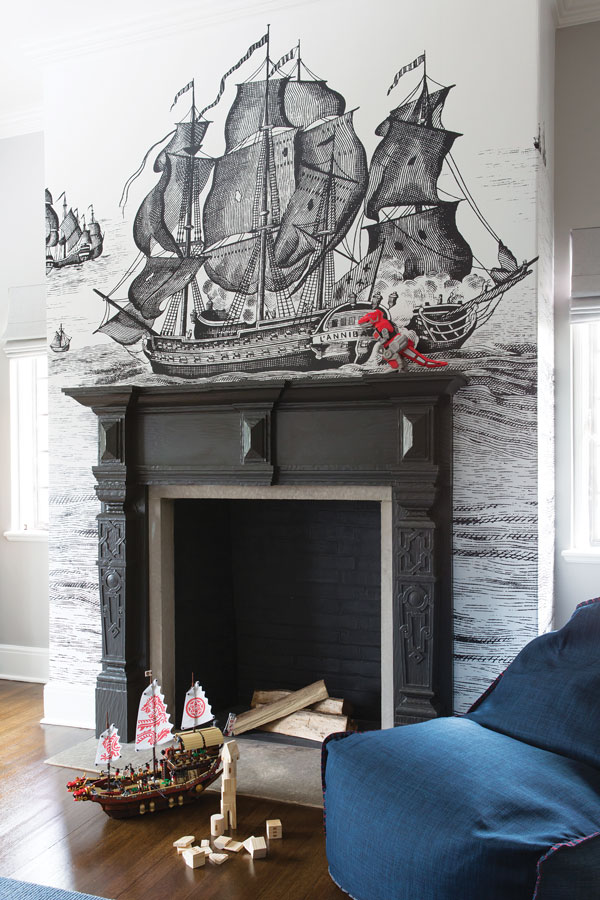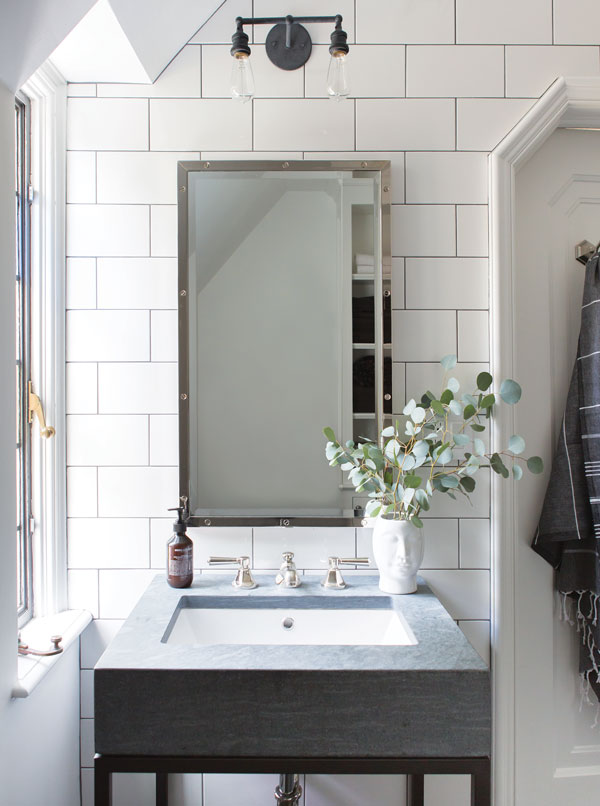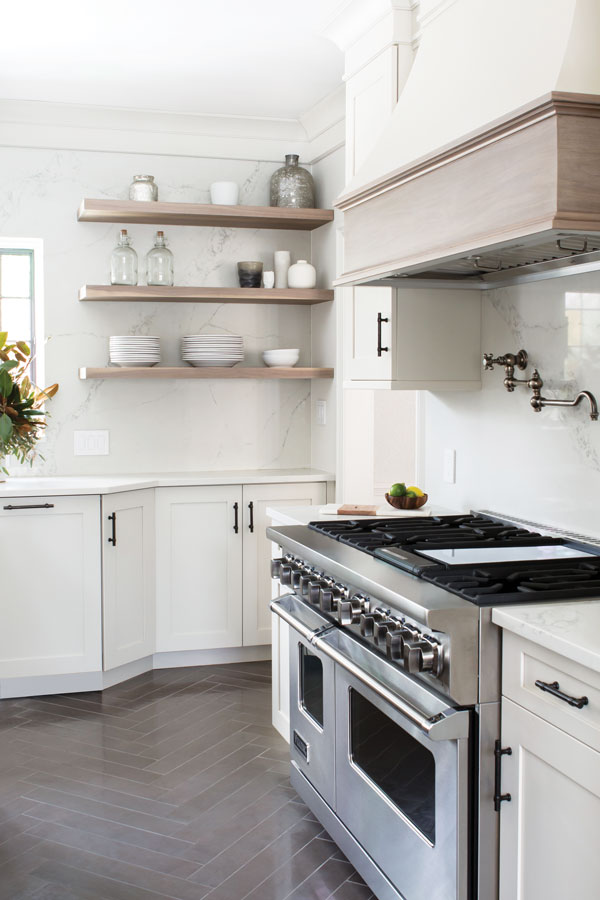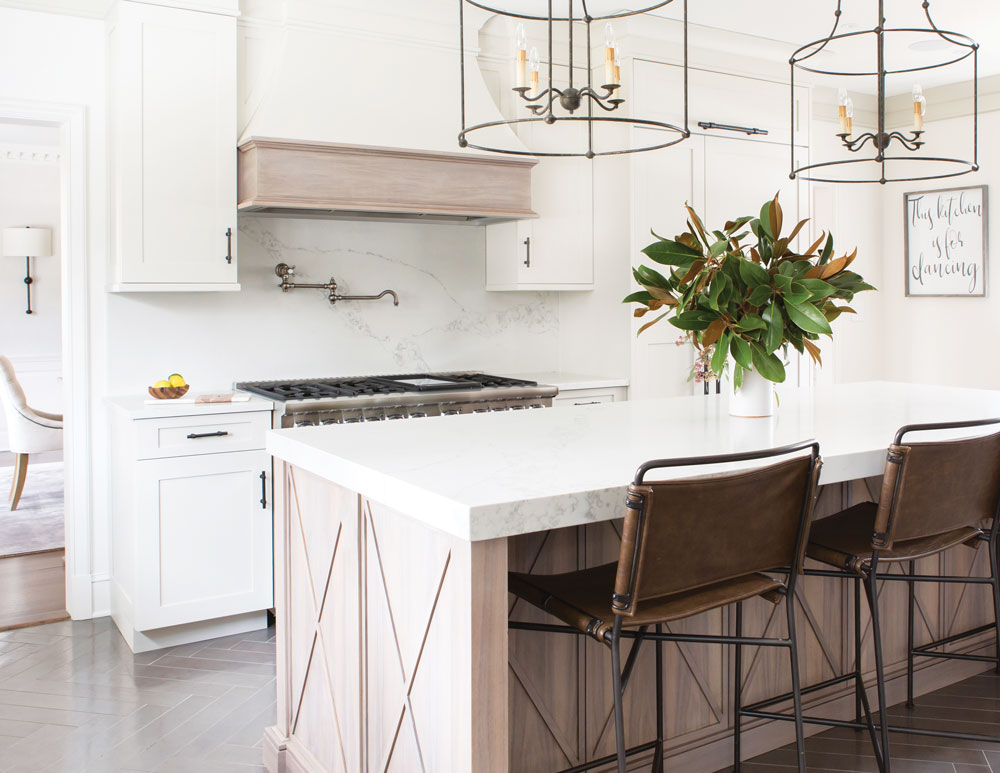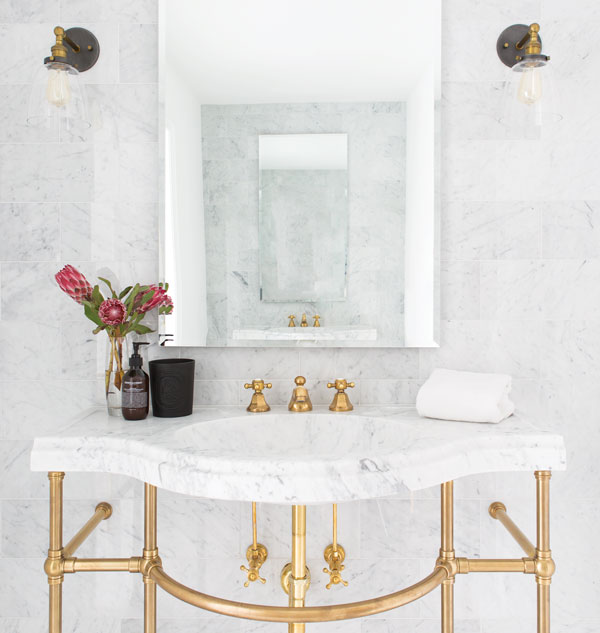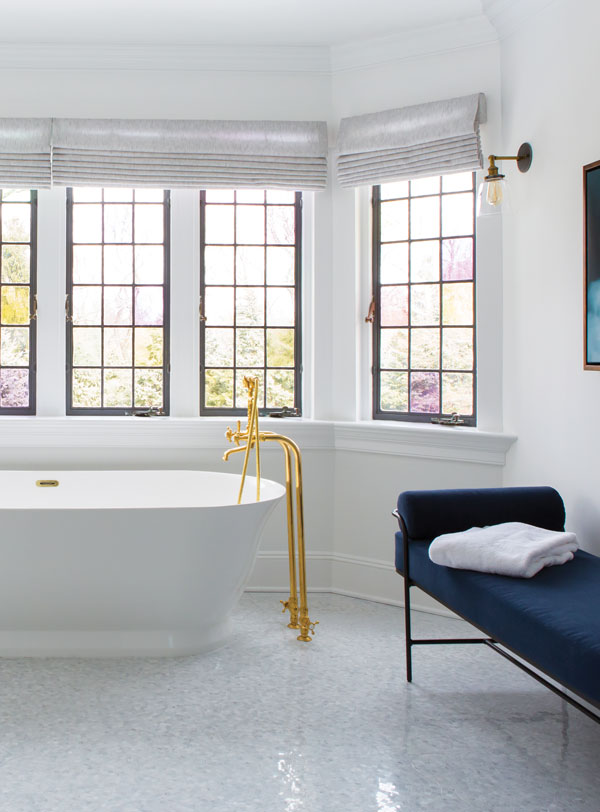Highlighting History
Writer Marirose Krall | Photographer Julie Blackstock | Designer Daria Boutle | Design/Build Lyons McConnell | Landscaping Martin O’Boyle LandscapingA Tudor-style home gets an update that honors its origins

Ivy climbs the home’s limestone façade, bringing the carved front door into sharp focus. Other plantings include Bada Bing® scarlet and Whopper® rose green-leaf begonias, Cathedral™ Series deep blue salvia, Serena® blue angelonia, Sonic® Red New Guinea impatiens and coleus.
The stately 1929 home in Essex County, New Jersey, is a classic example of Tudor design, with beautiful leaded-glass windows and ornamental woodwork. The owners prized the striking period details, but felt the home was a bit somber and dark. While a moody aesthetic may have been on-brand for Henry VIII, it wasn’t going to work for this 21st-century family. “They previously lived in a new-build, open-plan home, so this was architecturally very different from what they were used to,” designer Daria Boutle says. “They wanted to make this home feel airy and warm, bright and inviting.”
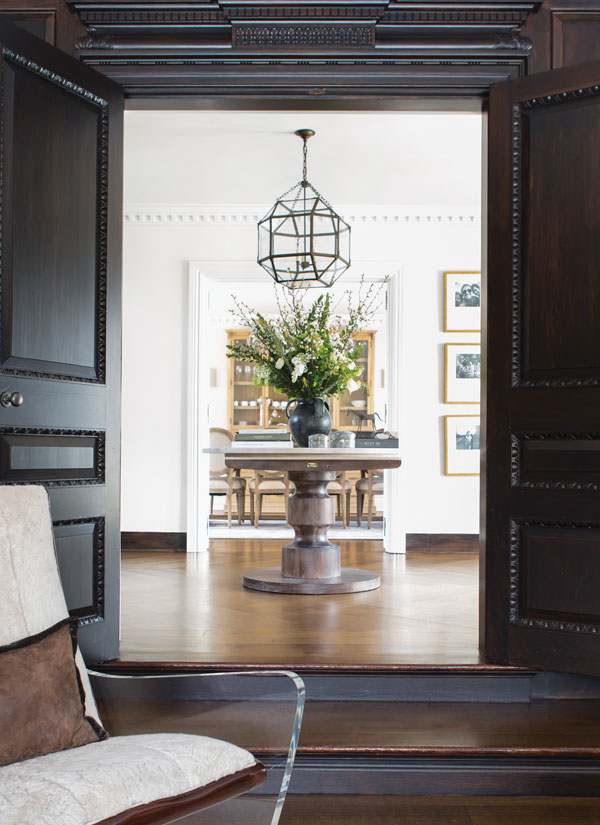
The home boasts beautiful woodwork, including trim above the living room door and dentil molding in the foyer. The hardwood flooring in the hallway replaced the home’s original slate flooring. “The slate felt very cold and dark,” designer Daria Boutle says. “The white oak in a herringbone pattern feels warmer and more inviting.”
“One of the main challenges was to give the home a better overall flow,” says Boutle, founder of Daria B Designs in Verona, New Jersey. To address the circulation issues, the homeowners enlisted Morristown, New Jersey-based Lyons McConnell. The architecture and construction firm reconfigured the layout of the house, updating rooms and creating a more open plan, always mindful of the pedigree of the residence. “It was very important to the homeowners to keep the character of the home and to retain as many original features as possible,” Boutle says.
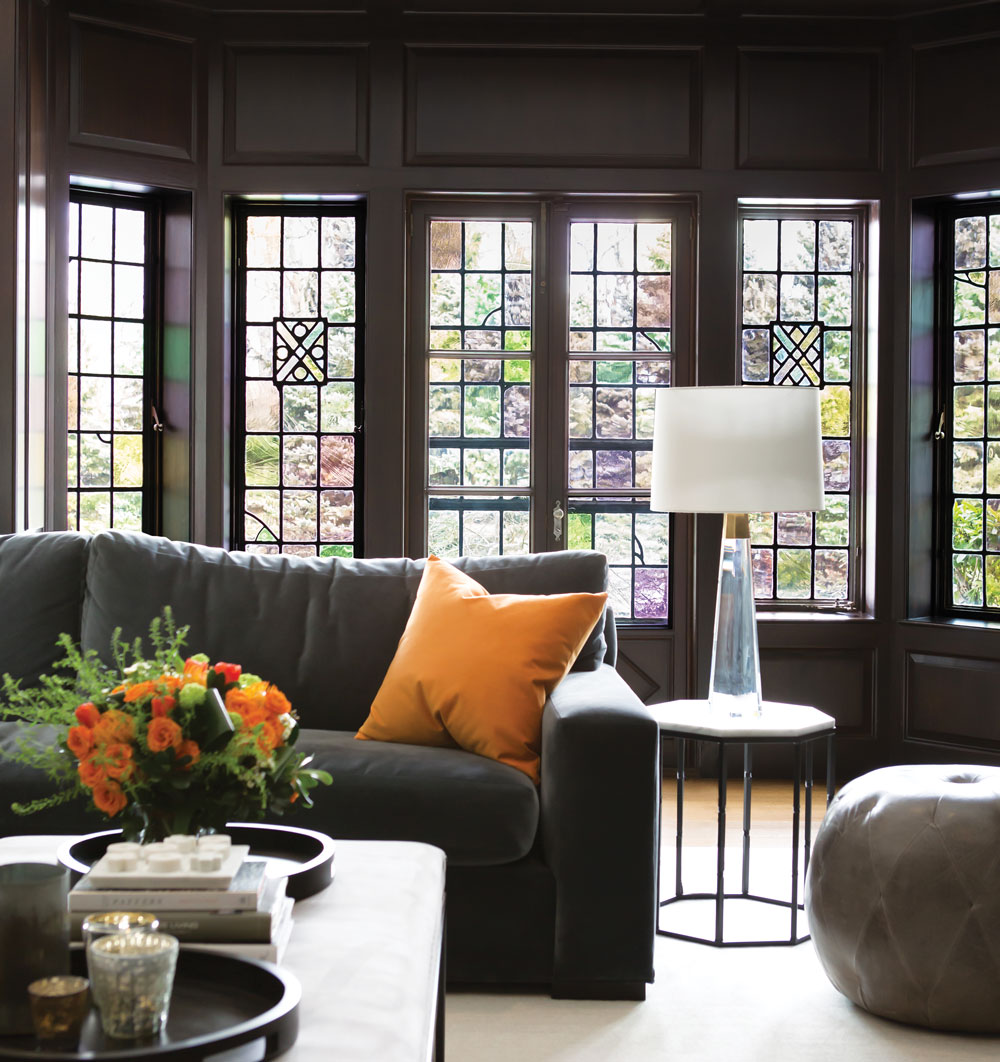
Uncomplicated furnishings in the living room keep the focus on the original paneling and leaded-glass windows.
To that end, existing doors were preserved and the lead windows were upgraded to improve their efficiency. In addition, the designer notes, “we retained the majority of the oversized wood detailing, such as paneling and decorative moldings.” Elements that couldn’t be saved were replaced with historically appropriate alternatives. “Repairing some of the original locks on the doors was just not feasible,” the designer says. “So we sourced vintage pieces.”
Accommodating modern sensibilities while retaining the home’s vintage charm required a bit of decorative dexterity. “Even though we wanted to make some spaces more contemporary, we still tried to choose colors and finishes that went with the house,” says Boutle, who had the walls painted in a warm palette of white and off-white tones. “This creates a juxtaposition with the dark wood elements,” she says. “It was important to create a clean palette to really appreciate the original elements such as windows, doors and woodwork.”
For the fixtures and furniture, Boutle “chose furnishings that did not fight with the more ornate original elements of the home.” In the living room, which features both floor-to-ceiling paneling and leaded windows, “We added streamlined furniture and pieces that felt more open and light to balance the heaviness of the woodwork. I feel that simple lines work well in ornate homes like this. The two styles are not conflicting with each other.”
The designer gave the woodwork in a child’s bedroom—an elaborately carved fireplace surround—a coat of black paint. The new, dark tone accentuates the richness of the carving and, Boutle notes, helps “to make that space feel bolder, crisper and more fun.” Also adding exuberance to the room is a dramatic mural above the fireplace depicting a sailing ship reminiscent of those in the Tudor navy.
Though the kitchen has thoroughly modern amenities, it still features components that coordinate with vintage elements in the home. Boutle says she “wanted to make sure the new finishes felt authentic and somewhat distressed.” Wrought iron pendants above the island add rustic charm and white bronze cabinet hardware was chosen specifically because it would develop a patina. “It has changed beautifully over time,” she adds.
“Changing beautifully” is what this project was all about—evolving to meet the needs of the present while acknowledging the best parts of the past. Boutle says her clients “were phenomenal. They were so kind and easygoing. Together we created a home that is light, inviting and practical for their family, yet still preserves the character of the property.”

